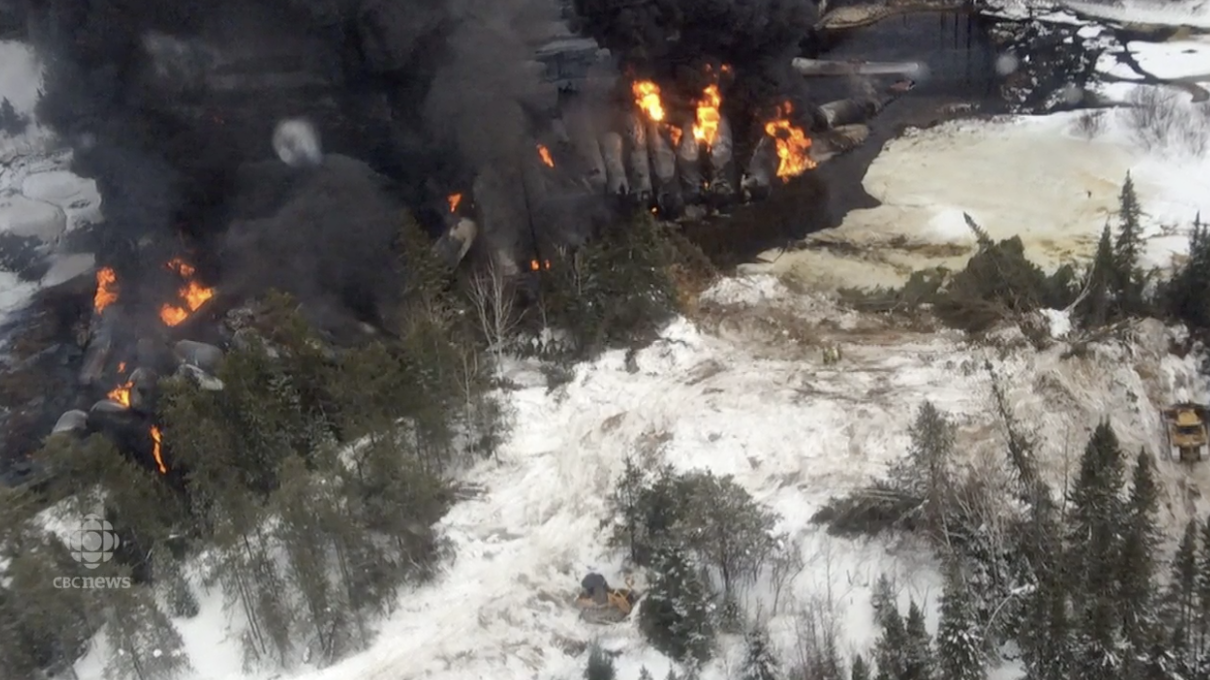Nothing seems able to derail the rise in Canadian tar sands oil production. Low prices, canceled pipelines, climate realities, a major oil company announcing it will no longer develop heavy oils, divestment, and now even refusals to insure tar sands pipelines have all certainly slowed production, but it is still poised for significant growth over the next several years.
In March an analyst for GMP FirstEnergy commented, “It’s hard to imagine a scenario where oilsands production would go down.”
But with pipelines to U.S. refineries and ports running at or near capacity from Canada, it’s hard to imagine all that heavy Canadian oil going anywhere without the help of the rail industry.
“The oilsands are witnessing unprecedented growth that we now peg at roughly 250,000 barrels per day in 2017 and 315,000 bpd in 2018, before downshifting to roughly 180,000 bpd in 2019,” says a new report from analyst Greg Pardy of RBC Dominion Securities.
However, much like shale oil in the U.S., increased production doesn’t necessarily mean increased profits. The Wall Street Journal recently reported that since 2007 investors have spent approximately a quarter trillion dollars more on shale production than those investments have generated.
Clearly the oil industry will keep pumping as much oil as they can even while losing large sums of money. And just like in the U.S., Canadian oil producers are facing significant economic challenges, which have caused some companies to get out of the business.
As a result of these challenges, forecasts for future tar sands production have fallen significantly. In 2013 the forecast for 2030 production was 6.7 million barrels per day. That has been revised down to 5.1 million barrels per day. While that is a sizable drop in expected future production, the industry will still be growing in the near future, and most of that oil will be exported to America.
One question currently up for debate is just how that oil will get to American refineries and ports.
Transportation Bottlenecks
As the Financial Post reported, RBC estimates that “the U.S. Gulf Coast refining centre could accept another 1.8 million bpd of heavy oil from Canada if producers can get it there.” That means Canadian producers should have willing buyers for as much oil as they can produce in the next several years — but only if they can “get it there.”
The preferred way to get oil from Canada to the Gulf Coast is by pipeline. The issue appears to be insufficient pipeline capacity to handle the coming increases in tar sands production. According to the RBC Dominion Securities report, Canadian tar sands oil production is expected to “materially exceed” pipeline capacity to the United States in early 2018.
This forecast comes at the same time the Financial Post reports that Enbridge claims its pipelines will be “at or near capacity through 2021.” With no new pipeline capacity expected in the near term, the only other option for oil companies is to shell out extra money to move that oil by rail.
Increasing But Still Below Record Levels
With more oil than the pipelines can handle, tars sands producers have little choice but to turn to rail over the next two to three years. The rail industry is showing signs of this transition already.
According to the National Energy Board, exports of Canadian oil by rail rebounded in September 2017 to 134,000 barrels per day. This is almost double the amount from the previous year but still below the all-time high of almost 180,000 barrels per day three years earlier.
Carl Evans, an analyst for Genscape, told Bloomberg that “crude exports by rail could rise to 400,000 barrels a day early next year.” However, for now the major rail players in Canada are playing a bit of hardball with the oil companies after being burned by the last oil-by-rail boom.
Reuters recently reported that Canadian Pacific CEO Keith Creel told investors in November that the end of the last oil-by-rail boom was a “very painful divorce” and that his company would not be “making 30-year investment decisions based on two or three years of demand.”
In addition, the rail companies are currently booked to move the country’s grain harvest, with Canadian National saying right now that is the company’s focus.
Are the big rail companies just holding out to cut better long-term deals to move oil by rail? Perhaps. They are certainly in a good bargaining position. Michael Tran, director of energy strategy at RBC Capital Markets, recently claimed as much.
“Canadian producers are now at the mercy of rail given that current pipes are near capacity and production continues to grow as legacy oil sands projects ramp up,” Tran said.
And while rail producers are playing hard to get, oil storage in Canada has reached record levels. However, storage levels were also pushed higher with November’s temporary shutdown of the Keystone pipeline due to a major leak.
‘Our phone is ringing off the hook’
All evidence suggests that current pipeline capacity to export Canadian tar sands oil is reaching its limit and that despite this, significant new production is still expected in the next several years. The most likely scenarios, then, suggest that either new production will have to slow down or all this additional oil will move by rail. But the odds of tar sands producers shutting down production are slim.
Rich Kruger is CEO of Imperial Oil, the Canadian affiliate of ExxonMobil, one of the companies still investing in increased tar sands production. Imperial has partnered with Kinder Morgan to build its own rail terminal. According to the Financial Post, Kruger claims the rail option has “enabled it to reach a large number of refineries that are prepared to pay a premium for its bitumen.”
Plains Midstream also announced it is reopening an oil-by-rail loading facility. Other oil companies like Cenovus also own rail loading facilities in Alberta near tar sands fields.
And even the CEO of Canadian Pacific, who said his company would not be making long-term investment decisions based on short-term demand, recently said, “I think there’s an opportunity, especially if we manage this properly, to win business.”
It appears the business is there. Altex Energy owns five rail terminals and CEO John Zahary told Reuters that “activity has doubled in the company yards in the past six months,” noting that “our phone is ringing off the hook.”
This latest boom in tar sands oil means the U.S. and Canada should be prepared to see a potentially huge increase in oil train traffic. The last time this happened, they also saw a boom in oil-by-rail accidents. But will they be prepared for that too?
Main image: Gogama, Canada, oil train derailment in 2015. Credit: Screen shot, CBC News
Subscribe to our newsletter
Stay up to date with DeSmog news and alerts






